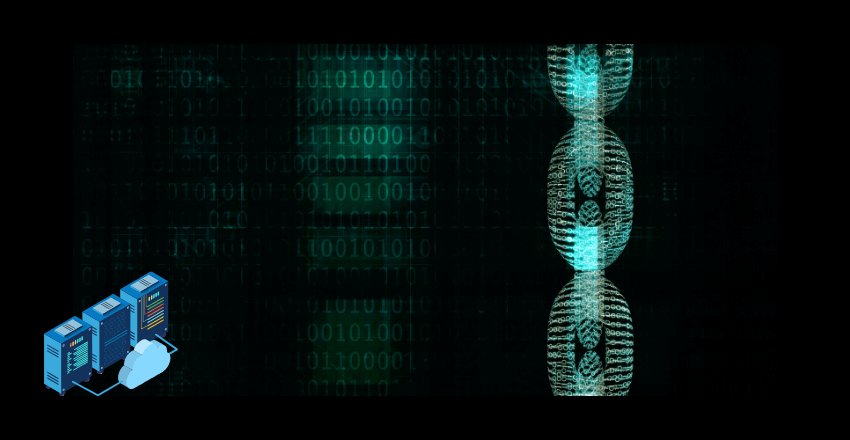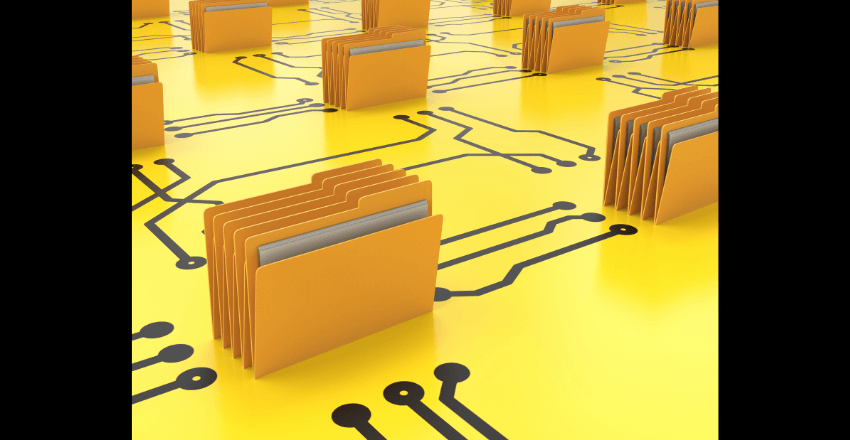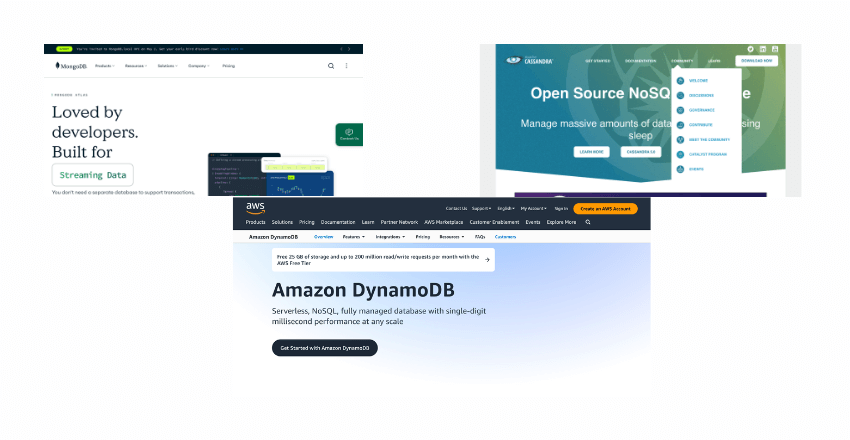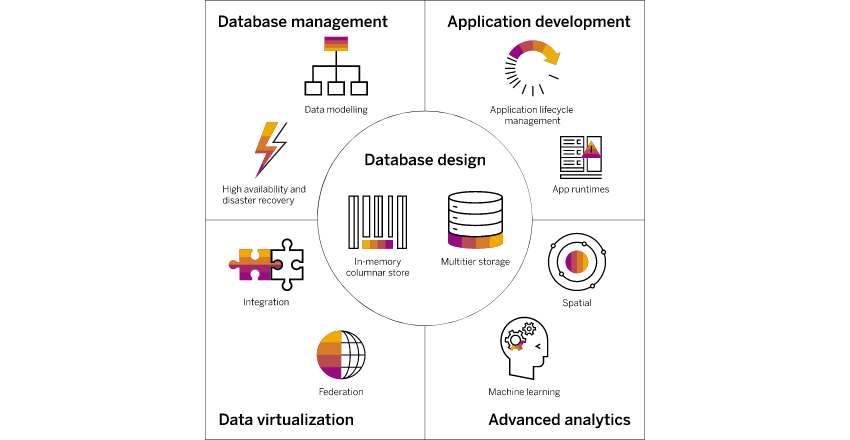
Next-Gen Database Solutions are transforming businesses with unparalleled speed, scalability, and flexibility, setting new standards in data management.
In today’s data-driven world, having a reliable and efficient database management system is essential for any organization. SQL Server has been a popular choice for many years, but with the ever-evolving technology landscape, companies must stay updated with modern options for enhanced database management.
That’s where Next-Gen Database Solutions come in. These alternatives to SQL Server offer greater scalability, performance, and flexibility, making them a viable option for organizations looking to migrate away from SQL Server.
SQL Server
SQL Server is a popular database management system developed by Microsoft. It is widely used by organizations of different sizes and industries to manage their data effectively. SQL Server offers features such as high availability, security, and integration with Microsoft’s other products. It supports both structured and unstructured data, making it a versatile option for various use cases.
However, like any technology, SQL Server has its limitations. One of its main drawbacks is its scalability, especially when handling large-scale data. This can result in slower performance and longer query times, which can negatively impact an organization’s productivity. Additionally, SQL Server can be expensive to license and maintain, especially for smaller organizations.
Understanding SQL Server’s Role in Data Management
SQL Server serves an essential role in managing data and is commonly used in various applications, including web development, business intelligence, and e-commerce. In a nutshell, a database management system like SQL Server is responsible for storing, organizing, and retrieving data in an efficient and secure manner.
SQL Server is a relational database management system, which means that it organizes data into related tables with predefined structures. It uses Structured Query Language (SQL) to manage and manipulate data and provides tools for backup and recovery, reporting, and analytics. SQL Server also supports transaction processing, which ensures that data is consistent and reliable, even in multi-user environments.
SQL Server is a robust and reliable database management system used by thousands of organizations worldwide. However, its limitations in scalability and high cost make it necessary to consider alternative solutions.
Database Migration: Why Consider Alternatives?

As organizations grow and change, their database management needs may evolve, prompting them to consider alternatives to their current solution. For those currently using SQL Server, there are several reasons why migrating to an alternative may be beneficial.
Firstly, cost can be a significant factor. SQL Server licensing can be expensive, and as the size of a database grows, so does the cost of hosting it. Alternatives such as NoSQL or cloud-based solutions can provide a more cost-effective option for scaling and managing data.
Another factor to consider is scalability. SQL Server has a limit on the amount of data it can handle, which can potentially cause performance issues as the database grows. By contrast, many alternative solutions are designed for scalability and can easily handle large amounts of data without compromising performance.
Flexibility is also worth considering. SQL Server is a relational database management system, meaning it structures data into tables and enforces strict relationships between them. This can limit the ability to handle unstructured or semi-structured data. Alternatives such as NoSQL databases or in-memory databases can offer greater flexibility in handling different data formats and structures.
Lastly, performance is a key concern. SQL Server’s traditional disk-based architecture can create a bottleneck for complex queries and real-time processing. Alternatives such as in-memory databases or NewSQL solutions can provide improved performance and real-time processing capabilities.
Overall, migrating to an alternative to SQL Server can be a smart move for organizations looking to improve their scalability, flexibility, cost-effectiveness, and performance. Before making the switch, it’s important to evaluate different options and conduct thorough assessments and proof-of-concept trials to find the best fit for specific needs.
NoSQL Databases: Next-Gen Alternatives

As the name suggests, NoSQL databases offer an alternative to traditional SQL databases by using a non-relational model for storing and retrieving data. Instead of tables, NoSQL databases use collections of documents, graphs, or key-value pairs to organize data. This flexibility makes them ideal for handling unstructured or semi-structured data, which is increasingly common in modern applications.
Popular NoSQL databases include MongoDB, Cassandra, and Redis. MongoDB is a document-oriented database that stores data in JSON-like documents. Cassandra is a distributed database that offers high scalability and fault tolerance. Redis is an in-memory data structure store that supports various data types and can be used as a database, cache, or message broker.
NoSQL databases are particularly useful for applications that require high scalability, availability, and performance. They can also handle complex data structures and relationships more efficiently than SQL databases, making them a good choice for modern applications that deal with social networks, IoT, or big data.
NewSQL Databases: Combining SQL and NoSQL
For those who want the best of both worlds, NewSQL databases offer a hybrid approach that combines the traditional SQL approach with the scalability and flexibility of NoSQL. These databases are designed to handle large-scale data processing, while still maintaining ACID compliance.
NewSQL databases are ideal for organizations that require the high availability and consistency of SQL databases, but also need the scalability and flexibility of NoSQL databases.
One popular NewSQL database is CockroachDB, which is designed to handle multiple replicas and partitions to ensure high availability. It is capable of processing large volumes of data and can scale horizontally across multiple nodes.
Google Spanner is another NewSQL database that offers scalability and consistency. It is designed to handle transactions that span multiple nodes and data centers, making it ideal for globally-distributed applications.
A sample SQL code for creating a table in CockroachDB:
CREATE TABLE employees (
ID INT PRIMARY KEY,
Name VARCHAR(50),
Department VARCHAR(50)
Salary INT);NewSQL databases are a great choice for organizations that need to process large amounts of data while still maintaining transactional consistency. However, it is important to thoroughly assess and evaluate the different NewSQL options to choose the one that best fits specific requirements.
Cloud-Based Database Solutions
In recent years, cloud-based databases have emerged as a popular alternative to self-hosted SQL Server. These databases offer several advantages, including scalability, cost-effectiveness, and ease of management. With cloud-based solutions, organizations can access their databases from anywhere in the world, eliminating the need for on-premises infrastructure.
One popular cloud-based database option is Amazon Aurora, which offers compatibility with MySQL and PostgreSQL, and provides high availability and scalability. Another option is Google Cloud Spanner, a fully managed relational database that is horizontally scalable, providing users with high availability and consistent performance for mission-critical applications.
When choosing a cloud-based database solution, it’s important to consider factors such as cost, flexibility, and security. Cloud-based solutions offer pay-as-you-go pricing models, making them cost-effective for businesses of all sizes. They also offer flexible storage options, allowing organizations to scale up or down as needed. Additionally, most cloud-based solutions offer robust security features to protect sensitive data.
Here’s an example of how to create a table in a cloud-based database using SQL code:
CREATE TABLE employees (
employee_id INT NOT NULL,
first_name varchar(50),
last_name varchar(50),
email varchar(50),
phone_number varchar(50),
hire_date DATE NOT NULL,
job_id varchar(50) NOT NULL,
salary decimal(8,2),
commission_pct decimal(2,2),
manager_id INT,
department_id INT
);Cloud-based databases are a viable option for organizations looking to migrate away from SQL Server, offering flexibility, scalability, and cost-effectiveness. When choosing a cloud-based solution, it’s important to evaluate your specific needs and choose a provider that can meet those requirements.
In-Memory Database Solutions

If you’re looking for a SQL Server alternative that can provide faster performance and real-time data processing, in-memory databases might be the way to go. In-memory databases use a computer’s main memory instead of disk storage for storing and accessing data, resulting in significantly reduced latency and faster response times.
Some popular in-memory databases include SAP HANA, Oracle TimesTen, and Redis Labs’ Redis. SAP HANA is an in-memory database platform that combines transactions and analytics in a single database, enabling real-time business operations. Oracle TimesTen is an in-memory database designed for mission-critical applications that require low-latency data access. Redis is an open-source, distributed, in-memory data structure store that can be used as a database, cache, and message broker.
In-memory databases are particularly useful for applications that require fast and frequent access to data. They’re also a good choice for applications that need to perform complex calculations or queries in real-time. However, they can be more expensive than traditional disk-based databases, so it’s important to evaluate your options carefully before making a decision.
If you’re considering using an in-memory database, it’s important to ensure your application is designed to take advantage of its benefits. This might involve modifying your code or application architecture to minimize data movement and optimize memory usage.
Example Code:
CREATE TABLE InMemoryTable
(
Id INT PRIMARY KEY NONCLUSTERED,
Name NVARCHAR(50),
Description NVARCHAR(250)
)WITH (MEMORY_OPTIMIZED=ON);Graph Databases: A Specialized Alternative
Graph databases are a specialized alternative to SQL Server that excel in handling complex relationships and interconnected data. They store data in nodes and edges, enabling efficient traversal of large data sets and offering powerful querying capabilities.
Popular graph databases include Neo4j and Amazon Neptune, which offer unique features such as multi-dimensional scaling and distributed processing. Graph databases are particularly useful in scenarios where data relationships are critical, such as social networks, recommendation engines, and fraud detection systems.
To illustrate the power of graph databases, consider a recommendation system for an e-commerce website. In a SQL Server database, product recommendations would be based on predefined criteria such as product category or price range. In contrast, a graph database can analyze the customer’s browsing and purchasing behavior, identify the relationships between products and customers, and recommend products that are most likely to appeal to the customer based on their unique preferences.
While graph databases may not be suitable for all use cases, they are a valuable alternative for organizations that require advanced relational data processing capabilities. Consider evaluating graph databases as part of your SQL Server replacement strategy, particularly if you are dealing with complex data structures and relationships.
Choosing the Right Alternative: Factors to Consider
Choosing a database solution that fits your organization’s requirements can be a daunting task. With numerous alternatives to SQL Server available, it is important to evaluate them based on several factors before making a final decision. Here are some considerations to help you choose the right alternative:
- Requirements: Identify your organization’s specific needs, including the types of data you need to store, the frequency of data updates, and the number of users who will access the data.
- Scalability: Consider the ability of the database to handle growing amounts of data without compromise on performance or functionality.
- Cost: Evaluate the total cost of ownership, including initial setup and ongoing maintenance, licensing fees, and hardware requirements. Be wary of hidden costs that may not appear upfront.
- Integration capabilities: Determine how well the database integrates with other systems and tools that your organization uses, such as applications, APIs, and third-party services.
It is also important to conduct thorough assessments and proof-of-concept trials before making a final decision. This will help you test the performance, scalability, and functionality of the alternatives, as well as identify any issues that may arise during migration. Consider partnering with a dedicated SQL developer from a reputable outsourcing company like HireSQL to ensure you have the necessary expertise to evaluate and integrate alternative solutions.
Here’s an example in SQL code that shows how to create a table in MongoDB:
SQL MongoDB CREATE TABLE customers ( id INT PRIMARY KEY, name VARCHAR(255), age INT ); db.createCollection(“customers”)
By taking the time to carefully evaluate the alternatives to SQL Server and considering the factors listed above, you can select a solution that meets your organization’s needs and ensures efficient database management.
Final Thoughts about Next-Gen Database Solutions
As the database landscape continues to evolve, it is essential for organizations to stay updated with modern options for enhanced database management. SQL Server has been a popular choice for many years, but it’s important to consider alternatives that offer better scalability, cost-effectiveness, and flexibility.
Next-Gen Database Solutions like NoSQL databases, NewSQL databases, cloud-based databases, in-memory databases, and graph databases offer a wide range of options to choose from. Each has its own strengths and weaknesses, and the choice ultimately depends on your specific needs and priorities.
Choosing the right alternative requires careful evaluation and testing. Factors such as scalability, cost, integration capabilities, and performance need to be considered. It’s recommended to conduct thorough assessments and proof-of-concept trials before migrating to a new database solution.
Embracing Next-Gen Database Solutions can help organizations stay ahead of the competition and achieve better database management. As a dedicated SQL outsourcing company, HireSQL is committed to helping our clients find the best SQL Server replacement for their specific needs. Contact us today to learn more.
External Resources
https://aws.amazon.com/rds/aurora/
FAQ
1. How do you ensure data consistency in distributed databases?
FAQ Answer:
Ensuring data consistency in distributed databases often involves implementing strategies like eventual consistency, strong consistency, or a hybrid approach depending on the database and use case. One common technique used in next-gen distributed databases is the use of conflict-free replicated data types (CRDTs) or multi-version concurrency control (MVCC) to manage concurrent data operations without locking.
Code Sample:
# Using a Cassandra-like distributed database (NoSQL) with lightweight transactions for strong consistency
from cassandra.cluster import Cluster
from cassandra.query import SimpleStatement
# Connect to the cluster and session (assuming Cassandra is the database)
cluster = Cluster(['127.0.0.1'])
session = cluster.connect('your_keyspace')
# Use a lightweight transaction to ensure strong consistency on write
query = SimpleStatement("""
INSERT INTO your_table (id, value)
VALUES (%s, %s)
IF NOT EXISTS
""", consistency_level=ConsistencyLevel.QUORUM)
session.execute(query, (unique_id, data_value))Explanation: This Python code snippet demonstrates how to use lightweight transactions in Cassandra to ensure strong consistency when inserting data. By specifying ConsistencyLevel.QUORUM, the operation requires a majority of the replicas for the given data piece to agree on the value, which helps in maintaining consistency across the distributed system.
2. How do you perform real-time data analytics in next-gen databases?
FAQ Answer:
Next-gen databases often support real-time data analytics through features like in-memory processing, stream processing capabilities, and time-series data optimizations. Technologies such as Apache Kafka for stream processing, coupled with databases like Redis for in-memory data storage or TimescaleDB for time-series data, enable efficient real-time analytics.
Code Sample:
-- Using TimescaleDB (an extension of PostgreSQL for time-series data) for real-time analytics
SELECT time_bucket('1 hour', timestamp) AS one_hour_bucket,
device_id,
AVG(temperature) AS avg_temp
FROM device_readings
WHERE timestamp > NOW() - INTERVAL '1 day'
GROUP BY one_hour_bucket, device_id
ORDER BY one_hour_bucket DESC, avg_temp DESC;Explanation: This SQL query demonstrates how to use TimescaleDB for real-time analytics by aggregating average temperature readings from a hypothetical device_readings table into hourly buckets for the last 24 hours. This enables fast, efficient analysis of time-series data.
3. How do you automate QA testing for schema changes in NoSQL databases?
FAQ Answer:
Automating QA testing for schema changes in NoSQL databases can be challenging due to their schema-less nature. However, by using test-driven development (TDD) approaches and schema validation tools, QA experts can automate the validation of data integrity and application functionality against schema changes.
Code Sample:
// Using Mongoose with MongoDB for schema validation and automated testing
const mongoose = require('mongoose');
const Schema = mongoose.Schema;
const userSchema = new Schema({
name: { type: String, required: true },
email: { type: String, required: true, unique: true },
// Assume more fields here
});
// Test case for schema validation
describe('User Schema Validation', () => {
it('should validate a user with a name and email', () => {
const User = mongoose.model('User', userSchema);
const user = new User({ name: 'John Doe', email: 'john@example.com' });
const error = user.validateSync();
expect(error).toBeUndefined(); // Passes if no validation error
});
});Explanation: This JavaScript code snippet uses Mongoose, an ODM (Object Data Modeling) library for MongoDB, to define a schema for a User collection and includes a simple automated test case to validate the schema. This approach enables QA teams to ensure data integrity and application logic remain consistent even as the underlying data schema evolves.







